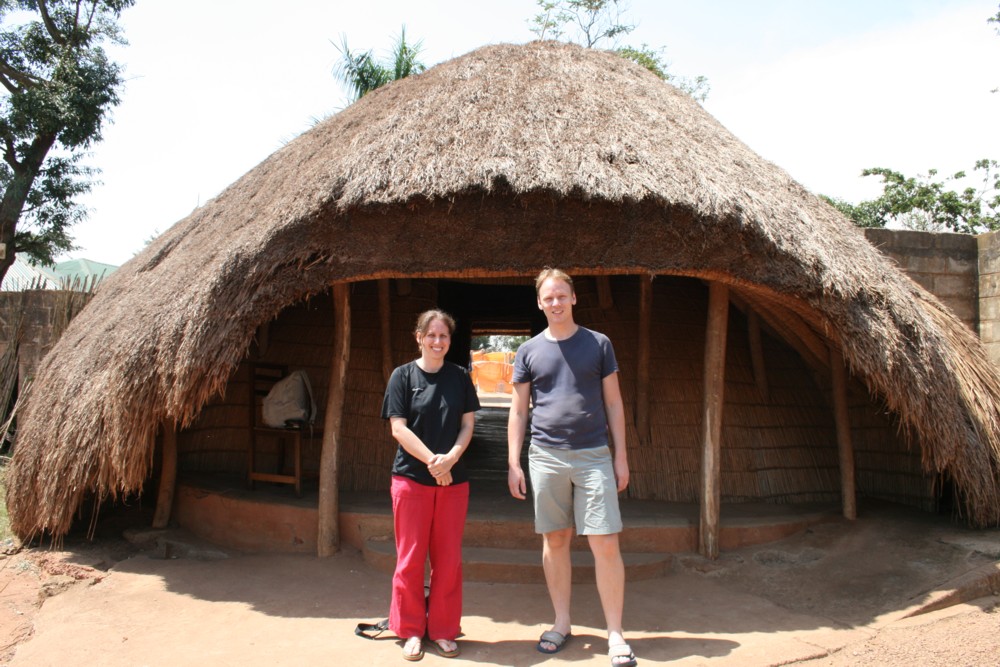Visiting Kasubi Tombs: A Deep Dive into Buganda and Uganda’s Royal Heritage – Kampala walking tours
Visiting Kasubi Tombs. If you’re exploring Uganda’s rich cultural heritage, a visit to the Kasubi Tombs is a must. Located on Kasubi Hill in Kampala, this UNESCO World Heritage site is a significant cultural landmark for the Buganda Kingdom. Whether you’re a history enthusiast or just curious about Uganda’s royal past, the Kasubi Tombs offer an immersive experience of the country’s traditions and history.
What Are the Kasubi Tombs?
The Kasubi Tombs are the burial site for the Kings of Buganda, one of Uganda’s largest ethnic groups. The site comprises four main tombs built in a traditional architectural style known as “mushroom architecture,” characterized by their large, circular structures with thatched roofs. These tombs are the final resting places of four Buganda kings: Mutesa I, Mwanga II, Daudi Chwa II, and Edward Muteesa II.
Why Visit Kasubi Tombs?
- Historical Significance: The Kasubi Tombs are more than just a burial site; they are a symbol of the Buganda Kingdom’s historical and spiritual heritage. The tombs serve as a historical record, reflecting the culture, traditions, and royal lineage of the Baganda people.
- Cultural Insight: Visiting the Kasubi Tombs provides a unique insight into the traditional customs and practices of the Buganda Kingdom. From the sacred rituals performed at the site to the intricate details of the tombs’ architecture, visitors can gain a deep understanding of the cultural significance of the site.
- Architectural Marvel: The tombs’ traditional architecture is a marvel of engineering and craftsmanship. The use of natural materials, the circular design, and the thatched roofs are all hallmarks of traditional Bugandan building techniques, showcasing the artistry and skill of the builders.
What to Expect During Your Visit
- Guided Tours: Upon arrival, you’ll be greeted by knowledgeable guides who will take you through the site. They will provide valuable insights into the history of the kings buried here, the architectural details of the tombs, and the cultural practices associated with the site. These guides often share fascinating stories and legends that bring the history of the Kasubi Tombs to life.
- Respectful Conduct: As the Kasubi Tombs is a sacred site, it’s important to approach your visit with respect. Dress modestly, speak quietly, and follow any instructions given by the guides. Photography may be restricted in certain areas, so be sure to ask before taking photos.
- Traditional Rituals: Depending on the time of your visit, you might witness traditional ceremonies or rituals conducted by the Baganda people. These ceremonies are an integral part of the site’s cultural significance and offer a glimpse into the living traditions of the Buganda Kingdom.
Practical Tips for Visiting
- Opening Hours: The Kasubi Tombs are generally open to visitors daily. However, it’s a good idea to check current opening hours and any potential restrictions before your visit.
- Entry Fees: There is usually an entry fee to visit the Kasubi Tombs. Fees may vary for local and international visitors, so it’s advisable to confirm the costs ahead of time.
- Location: The Kasubi Tombs are located on Kasubi Hill, about 5 kilometers from Kampala’s city center. It’s easily accessible by taxi or private car.
- Safety and Security: While the area around the Kasubi Tombs is generally safe, it’s always wise to take standard travel precautions. Keep your belongings secure and be mindful of your surroundings.
Conclusion
A visit to the Kasubi Tombs is more than just a trip; it’s an opportunity to immerse yourself in Uganda’s rich royal history and cultural heritage. The site’s historical significance, cultural insights, and unique architecture make it a must-see for anyone interested in understanding the heart of the Buganda Kingdom. So, if you’re planning a trip to Uganda, ensure that the Kasubi Tombs are on your itinerary. You’ll leave with a deeper appreciation of Uganda’s history and the vibrant traditions that continue to shape its culture today.



